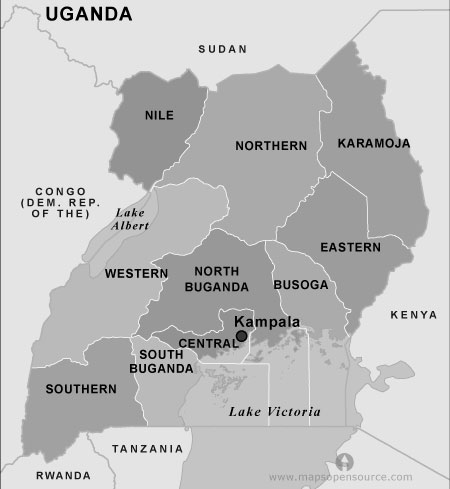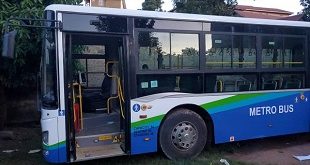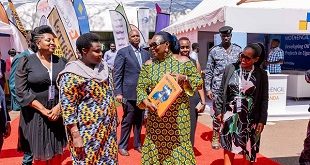
We camped at Bin Rwotfor about a week as a battle raged on between the UPDF and the LRA in the Imatong mountains. The UPDF, it appeared, always knew where Kony was yesterday but they could not predict his next move or where he is on a particular day. That is why he remained elusive for 23 years despite the vast state resources deployed to get him dead or alive.
In the week at Bin Rwot, I learnt to survive on little food and water and sleep in the open under the intense heat of Sudan for days. But still Kevin showed me how I was still an amateur on the survival game. We woke up one morning and somebody had volunteered to make coffee. Due the scarcity of cups we had all lined up for the only one cup that was available.
However, Kevin woke up later washed his face and then using his knife, he cut the mineral water bottle into two pieces and the other half is what he used to drink coffee. That made us look like the fools that we indeed were! How could we not have figured out a way! Kevin laughed at me for weeks. I must admit Kevin was such an inspirational figure in my journalism life and even taught me to survive in a hostile environment.
No wonder while visiting the offices of the Independent newspaper recently I found Kevin’s portrait hang on the wall together with the other eight giants in the media industry in Uganda as people who had shaped or inspired the founders of the magazine the likes of Andrew Mwenda. Andrew had listed people like WafulaOgutu, William Pike, Richard Tebere, Teddy SeziCheye, Charles Onyango Obo, Murray Oliver, Jimmy Sserugo, and David OumaBalikowa as the gentlemen that had inspired him.
I too had been lucky to have worked both in the newsroom or the field alongside three of those nine great journalists. My list would have also included, Samuel Guma, Rachel Mugarura, Frank Nyakairu, Henry Mukasa, James Akena, Julie Gichuru, Charles Mwanguhya, Betty Dindi, Simon Kasyate, Charles Odongtho, Iguma Gabriel, SudirByaruhanga, Chris Ocamuringa, Lynn Musiitwa, and Paul Kavuma.
This is why:Guma, for editing my first news story and encouraging me to move on, Mugarura, for her leadership that pushed me to even win awards, Nyakairu, for the bravery, Mukasa, for fairness, Akena, simply there is no photo journalist in Uganda like him, Julie Gichuru seven days together at a workshop in Arusha Tanzania, showed me why she is the undisputed TV Queen in Kenya, Betty Dindi, I thought I knew how to write until she worked on my script, Kasyate, for our subtle competition that brought the best out of me, Kavuma, for teaching me that good was the enemy of great and Mwanguhya the evergreen home boy who does not run out of ideas.
After our sojourn in the Sudan, it was time to return to Gulu. I was fed up with all this jungle life. I wanted a hot bath, hot food, and some semblance of civilisation. I had experienced a lot including seeing a man blown into pieces by a land mine. We were told not just to meander about or otherwise we would step on land mines.
It was time to return on a Sunday evening. That afternoon John Nsimbe the Monitor newspaper photographer and I plus a few other soldiers went down to Kit River for a bath. I plunged in this pristine water and it was a relief considering the heat of Sudan. Our swimming was cut short by other people who told us that the river was infested with bilharzias causing worms. We jumped out very fast and returned to the base.
Then we heard the sound of the Jet Ranger while it was possibly five kilometres away. We were overjoyed. We knew it was indeed time to return home.
When the helicopter landed we almost immediately wanted to board. However, it turned out the number of people who needed to come with us was more than the aircraft could carry. Kevin was asked to leave one person behind that would come with army trucks after a week! John Nsimbe and I were depressed! We did not know who was to be left behind and all of us wanted to leave as soon as possible.
Kevin entered one of the tents and called both of us. Kevin was the kind of man who could not beat about the bush!
“This is not easy….but one of us has to remain behind,” he said.
We could really see the aircraft was small. A Jet Ranger carries about seven people including the co-pilot.
“Nsimbe…you are my photographer, I will carry out one of your cameras and the card of the pictures you of have taken. I am sorry, you will remain. Patrick will need to file the broadcast stories as I work on the print version.”
John Nsimbe, who now lives in the U.S., was a hardened journalist. He had covered the Rwandan genocide and was behind the enemy lines with the RPF before the fall of Kigali in 1994. However, after this bombshell, Nsimbe kept silent for almost a minute, his eyes turned red. He uttered only one word: “OK”.
I gave him the reminder of my dry ration and he walked back into our sleeping tent. I think he did not want to see us take off because I kept my eyes glued at the tent entrance about one hundred meters away and Nsimbe did not come out as the helicopter lifted off.
On board was Capt. Abdul Rugumayo, the then public relations officer for the UPDF’s Fourth Division based in Gulu. I realised that he wanted to carry out a reconnaissance mission as well. He told the pilot to follow suspected LRA rebel routes towards the rocky hills we could see in a distance.
Now, the Jet Ranger is not typically an attack helicopter like a gunship or these modern Apache machines. It is an aircraft mainly used by game park rangers to herd animals in national parks. So we were very vulnerable to a simple surface to air missile or even a hand held rocket propelled grenade that were common with LRA.
We maneuvered those rocky hills for several minutes sometimes coming dangerously very low. All the time, I was saying my prayers. I thought what they were doing was total madness but I outwardly kept my cool.
No sooner had we stopped searching these rocky hills than we headed straight in a tropical storm. The Jet Ranger is the kind of machine that easily gets tossed around by strong winds. I could see the pilot battling the storm and at one time the plane shook uncontrollably due to the turbulence. The storm ebbed and we continued on a steady flight to Gulu.
We were flying over a huge expanse of green vegetation and you could see the Victoria Nile meandering through flat, beautiful, and empty land. South Sudan is such a large country, probably bigger than Uganda, Kenya, Rwanda and Burundi combined. Most of the land has never been cultivated since creation. No wonder some South Sudanese refer to their country as the Garden of Eden. Still, I was happy to heading back home.
We landed in Gulu barracks at 7pm in a drizzle. I immediately headed to Acholi Inn where Gen.Kazini had booked us and I slept. I did my radio stories and also Kevin and I co-authored a two page feature in the Daily Monitor. Sharing a byline with Kevin was simply great on my side, especially realising that some of my contributions had survived into the final version!
This is the last article in The independent’s series, “Museveni’s Warriors” by war-correspondent Patrick Kamara.
 The Independent Uganda: You get the Truth we Pay the Price
The Independent Uganda: You get the Truth we Pay the Price


